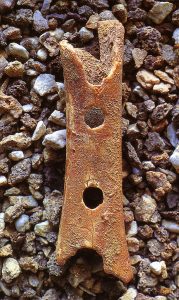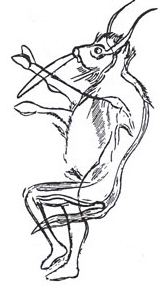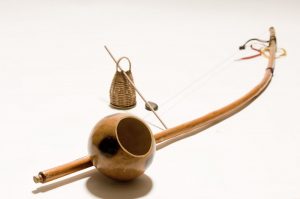Music in the Stone Age | August 24-27, 2017
XV Symposium of the ICTM Study Group on Music Archaeology
& Workshop of the European Music Archaeology Project (EMAP)
Research Centre of the Slovenian Academy of Sciences and Arts, Ljubljana
August 24-27, 2017
 Organizers:
Organizers:
ICTM Study Group on Music Archaeology
& German Archaeological Institute, for the EMAP
Arnd Adje Both & Dorotheee Judith Arndt
Co-Organizers:
National Museum of Slovenia, Ljubljana (Barbara Ravnik & Peter Turk)
Department of Musicology, Faculty of the Arts, University of Ljubljana (Svanibor Pettan)
Research Centre of the Slovenian Academy of Sciences and Arts, Ljubljana (Matija Turk)
Imago Sloveniae (Janoš Kern)
The XV Symposium of the ICTM Study Group on Music Archaeology will be held in Ljubljana, Slovenia, from August 24-27, 2017. The symposium is intended to establish a platform of current research on topics such as prehistoric human music cultures and their respective sound tools, or the archaeoacoustics of caves and other prehistoric sites. Besides reflecting current projects and results, it is intended to deepen ongoing discussions, and to publish the information in an anthology.
Possible sessions of the symposium are the making, playing, and meaning of bird bone pipes or any other sound artefacts believed to be Palaeolithic, Mesolithic and Neolithic musical instruments, the evolution of human neurobiology in relation to sound production/music-making, the archaeoacoustics of prehistoric sites, or organological developments and cultural interactions in the earliest phase of human music.
During the symposium, a panel and round table funded by the European Music Archaeology Project will be held. The event is intended to reconsider divergent views on the perforated thighbone of a cave bear excavated in the Divje babe I cave, Slovenia, which lead to the heated controversy if this object could be a flute produced in the time of the Neanderthals. The find stimulated research over the last two decades, and the debate is still going on in the light of latest laboratorial results. On the workshop and round table both pro- and counter-arguments will be addressed and openly discussed.
Music and consciousness | Marcel Otte
Any human society produces powerful and essential emotional activities. They combine solidarity and a sense of play and pleasure. Among them music is the most universal, and has the most powerful significance. Singing or dancing rarely yield material evidence, though they can sometimes be associated with basic instruments such as leaves or stalks.
A musical activity makes it possible to fit into the order of the universe, into a cosmic and natural harmony, into the unfolding of time. Those essential laws of the human mind find material evidence in the case of Dijve Babe as early as sixty thousand years ago. The specific location of this isolated cave probably accounts for the use of bones, which were easy to be found on the spot.




